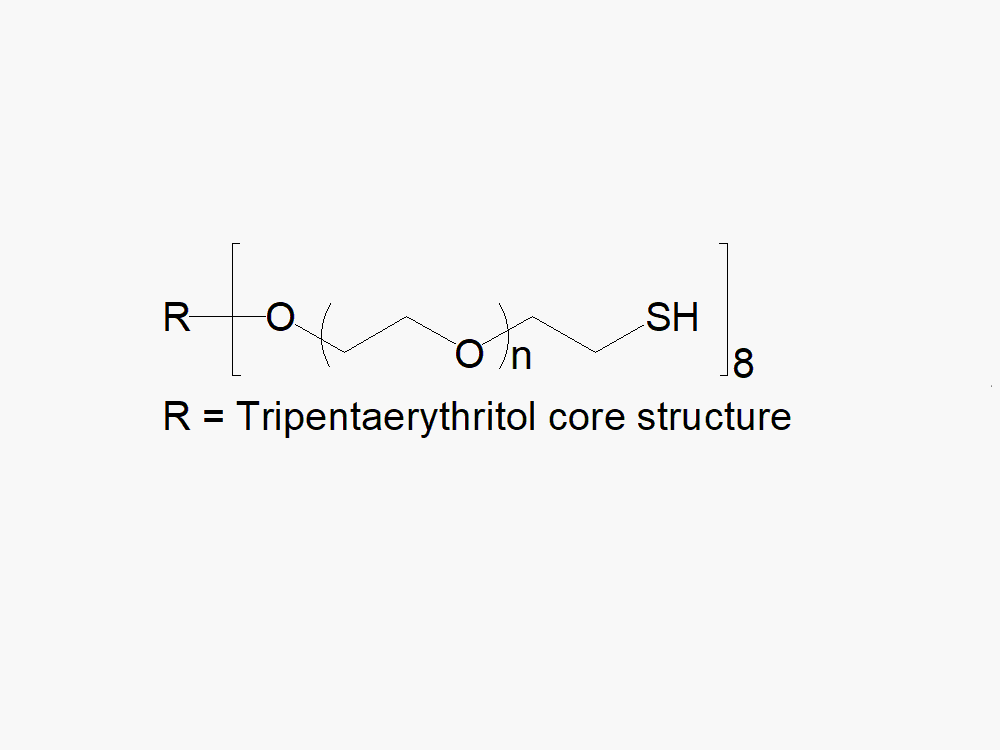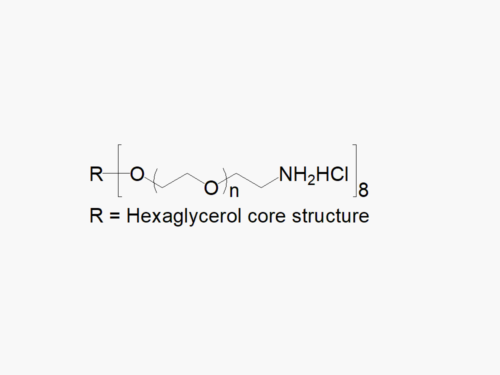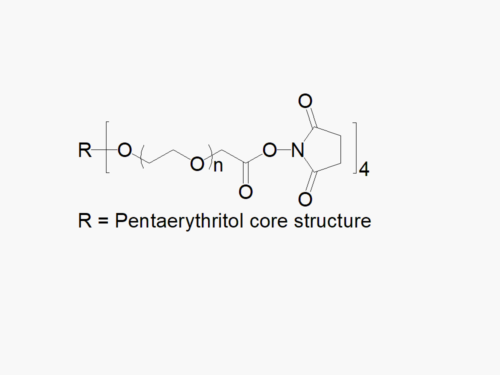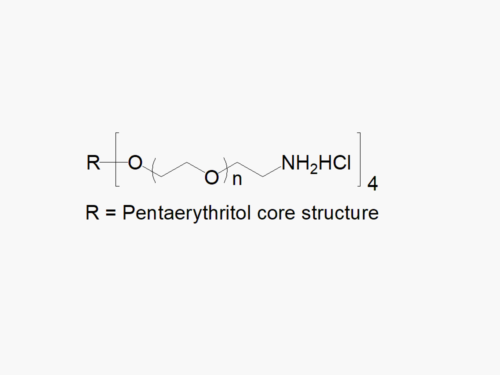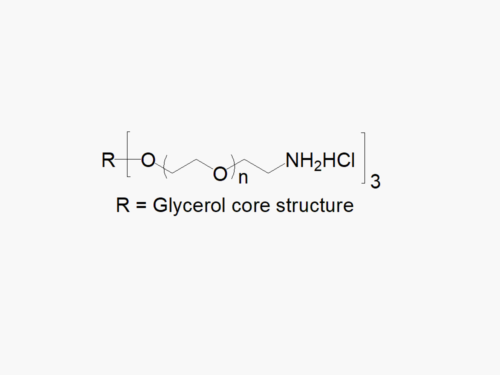PEG products with additional MW may be made to order, please contact us for details
8arm PEG Thiol (tripentaerythritol)
$80.00 – $960.00
Description
8arm PEG Thiol (tripentaerythritol) with superior quality specification of > 90% Substitution.
JenKem Technology’s 8arm PEG Thiol (tripentaerythritol) derivatives can be crosslinked into PEG hydrogels. PEG hydrogels have a variety of applications in medical devices and regenerative medicine, and are especially of interest for controlled release of drugs, for 2D and 3D cell culture, and for wound sealing and healing. JenKem Technology’s 8 arm (TP) PEGs are synthesized by ethoxylation of tripentaerythritol. 8ARM(TP)-PEGs with tripentaerythritol core have a higher purity as evidenced by MALDI compared with the generic 8ARM-PEGs with a hexaglycerin core.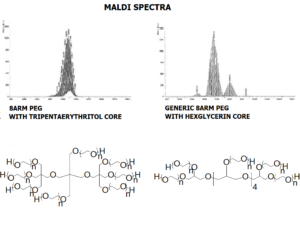
The number of ethylene oxide units in the PEG chain may not be equal for all arms. The total molecular weight reported for the JenKem multi-arm PEGs is the sum of the PEG molecular weights of each arm. Multi-arm star PEG products with molecular weights, branching, and functional groups not listed in our online catalog may be available by custom synthesis. Please inquire at tech@jenkemusa.com about pricing and availability.
Bulk PEGs and GMP grade PEGs are made-to-order. Please contact us for bulk pricing.
Click here to download the MSDS
References:
- Wilson, RL, et al, Protein-functionalized poly (ethylene glycol) hydrogels as scaffolds for monolayer organoid culture. Tissue Engineering Part C: Methods. 2021, 27(1):12-23.
- Castilho, M., et l., Hydrogel-based bioinks for cell electrowriting of well-organized living structures with micrometer-scale resolution. Biomacromolecules. 2021, 22(2):855-66.
- McKee, C, et al., Transcriptomic analysis of naïve human embryonic stem cells cultured in three-dimensional PEG scaffolds. Biomolecules. 2021, 11(1):21.
- Nguyen, M.K., et al., RNA interfering molecule delivery from in situ forming biodegradable hydrogels for enhancement of bone formation in rat calvarial bone defects, Acta Biomaterialia, 2018, V. 75, P. 105-114.
- Lee, S., et al., Effects of the poly(ethylene glycol) hydrogel crosslinking mechanism on protein release, Biomaterials Science, 2016.
- Zhang, W.B., et al., Extended Twilight among Isogenic C. elegans Causes a Disproportionate Scaling between Lifespan and Health, Cell Systems, 2016, 3:4, p. 333-345.e4.
- Yan, X., et al., A method to accelerate the gelation of disulfide-crosslinked hydrogels, Chinese Journal of Polymer Science, 2015, 33:1, pp 118-127.
- Nguyen, M.K., et al., Sustained localized presentation of RNA interfering molecules from in situ forming hydrogels to guide stem cell osteogenic differentiation. Biomaterials, 2014, 35(24): p. 6278-6286.
- Lee, S., et al., The effects of varying poly(ethylene glycol) hydrogel crosslinking density and the crosslinking mechanism on protein accumulation in three-dimensional hydrogels, Acta Biomaterialia, 2014, 10(10) p: 4167–4174.
Founded in 2001 by experts in PEG synthesis and PEGylation, JenKem Technology specializes exclusively in the development and manufacturing of high quality polyethylene glycol (PEG) products and derivatives, and related custom synthesis and PEGylation services. JenKem Technology is ISO 9001 and ISO 13485 certified, and adheres to ICH Q7A guidelines for GMP manufacture. The production of JenKem® PEGs is back-integrated to in-house polymerization from ethylene oxide, enabling facile traceability for regulated customers. JenKem Technology caters to the PEGylation needs of the pharmaceutical, biotechnology, medical device and diagnostics, and emerging chemical specialty markets, from laboratory scale through large commercial scale.

